Top 7 Yoga Poses to Boost Flexibility and Relieve Stress: A Beginner’s Guide
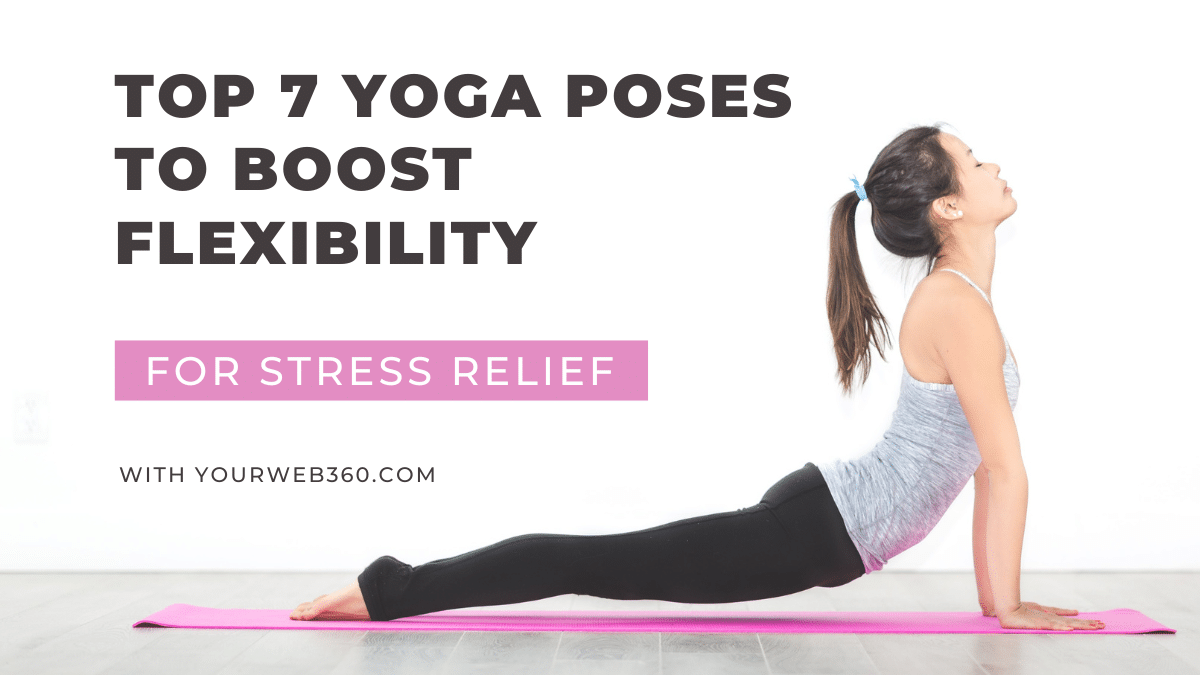
Introduction
Yoga has long been celebrated for its powerful effects on both the body and the mind. For beginners, yoga offers a gentle yet effective way to increase flexibility and reduce stress, helping to improve overall well-being. In this guide, we’ll explore seven beginner-friendly yoga poses that can help you stretch tight muscles, release tension, and find a sense of calm. You’ll also learn about breathing techniques and mindfulness to enhance the mental benefits of your practice. Whether you’re new to yoga or returning to the mat, these poses and tips will help you build a routine that supports your physical and mental health.
Physical and Mental Benefits of Yoga
Yoga isn’t just about stretching; it’s a holistic practice that benefits the body and mind. Here are some of the key benefits of incorporating yoga into your daily routine:
- Improved Flexibility: Regular yoga practice helps lengthen and stretch tight muscles, improving range of motion and reducing the risk of injury.
- Stress Relief: Yoga encourages relaxation through slow, mindful movements and deep breathing techniques that activate the parasympathetic nervous system, reducing stress hormones in the body.
- Better Posture: By focusing on body alignment, yoga helps improve posture, alleviating back and neck pain caused by long hours of sitting.
- Mental Clarity: Yoga encourages mindfulness, promoting a deeper connection between the body and mind. This can lead to greater mental clarity and emotional balance.
Now, let’s dive into seven yoga poses designed to boost flexibility and relieve stress, perfect for beginners.
1. Downward-Facing Dog (Adho Mukha Svanasana)
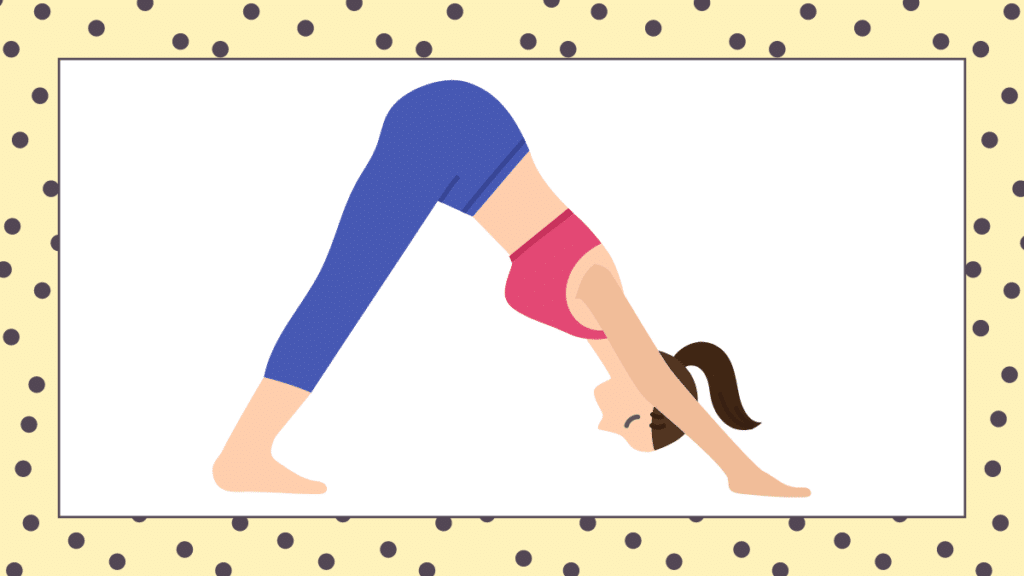
How to Perform:
- Start on your hands and knees, with your wrists directly under your shoulders and knees under your hips.
- Tuck your toes and slowly lift your hips towards the ceiling, straightening your legs and forming an inverted V shape.
- Keep your head between your arms, and try to press your heels towards the floor. Keep your fingers spread wide and shoulders away from your ears.
- Hold this pose for 5-10 breaths, focusing on lengthening your spine and relaxing your head.
Benefits: Downward Dog is one of the most popular poses in yoga because it stretches the entire body. It helps lengthen the hamstrings, calves, and spine while relieving tension in the shoulders and neck.
Modification:
If you have tight hamstrings, bend your knees slightly or keep your heels lifted off the ground until your flexibility improves.
2. Child’s Pose (Balasana)
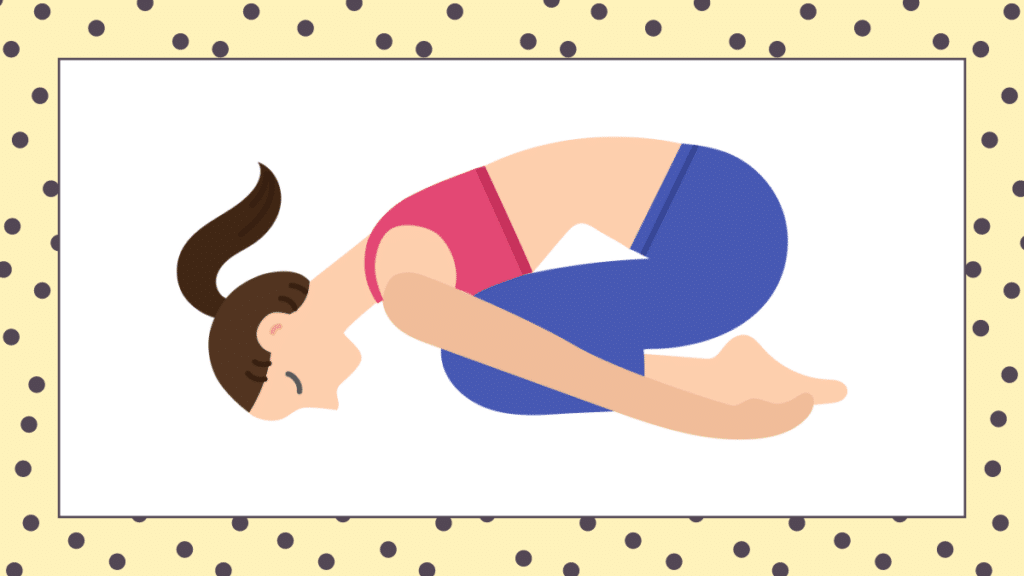
How to Perform:
- Kneel on the floor, bringing your big toes to touch and knees wide apart.
- Sit back on your heels and extend your arms forward, lowering your chest to the ground.
- Rest your forehead on the mat and breathe deeply, focusing on relaxing your entire body.
Benefits: Child’s Pose is a restful posture that gently stretches the hips, thighs, and lower back. It’s perfect for calming the mind and reducing stress.
Modification:
Place a yoga block or folded blanket under your forehead if your head doesn’t reach the ground. You can also keep your knees closer together for more comfort.
3. Cobra Pose (Bhujangasana)
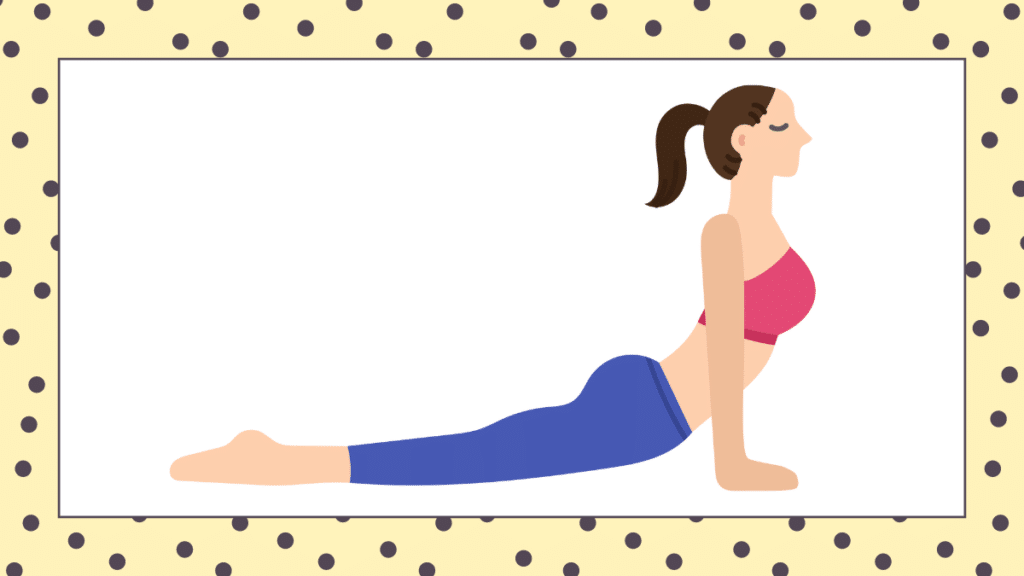
How to Perform:
- Lie face down with your legs extended and the tops of your feet pressing into the mat.
- Place your hands under your shoulders, and on an inhale, lift your chest off the ground by pressing into your palms.
- Keep your elbows slightly bent and shoulders relaxed. Lift your heart forward, opening up your chest.
- Hold the pose for 5-10 breaths before gently lowering back down.
Benefits: Cobra Pose opens the chest and stretches the abdomen while strengthening the lower back. It’s an excellent pose for relieving stress and tension in the upper body.
Modification:
If you experience discomfort in your lower back, you can lower down onto your forearms in a gentler version of the pose, known as Sphinx Pose.
4. Cat-Cow Stretch (Marjaryasana-Bitilasana)
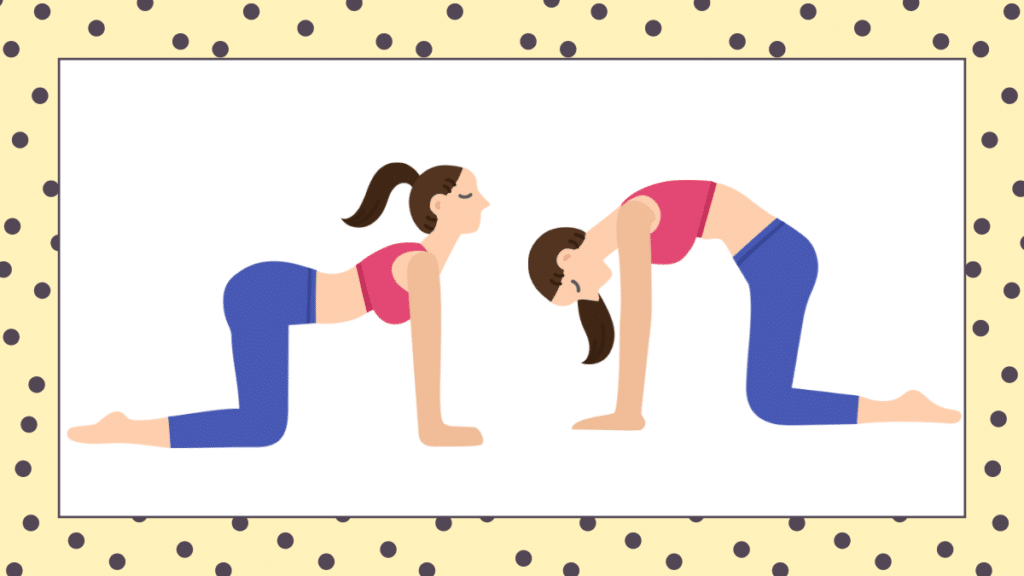
How to Perform:
- Start on your hands and knees in a tabletop position, with your wrists directly under your shoulders and knees under your hips.
- On an inhale, arch your back and lift your head and tailbone towards the ceiling (Cow Pose).
- On an exhale, round your back and tuck your chin towards your chest (Cat Pose).
- Move between Cat and Cow for 5-10 breaths, focusing on synchronizing your movement with your breath.
Benefits: This gentle flow between Cat and Cow stretches the spine and neck while promoting flexibility in the back. It also helps release tension and calm the mind, making it a great stress reliever.
Modification:
If you have sensitive wrists, place a folded blanket under your hands or perform this movement from a seated position on a chair.
5. Standing Forward Bend (Uttanasana)
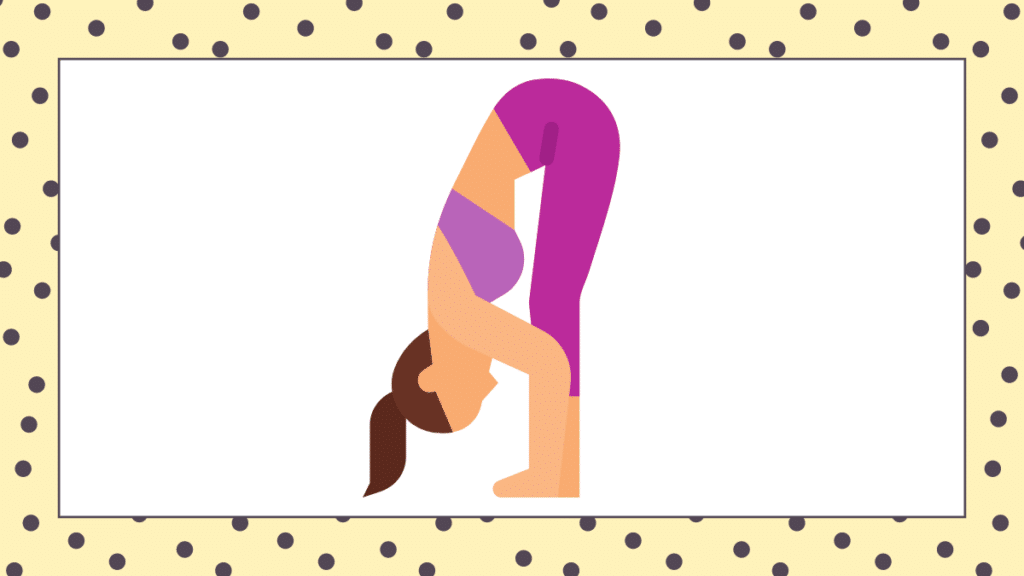
How to Perform:
- Stand with your feet hip-width apart, and on an exhale, hinge forward from your hips, allowing your head to hang towards the floor.
- Keep a slight bend in your knees and grab opposite elbows with your hands, letting your upper body relax.
- Breathe deeply and stay in this pose for 5-10 breaths, feeling the stretch in your hamstrings and lower back.
Benefits: Standing Forward Bend stretches the hamstrings, calves, and spine while calming the nervous system. This pose encourages relaxation and helps reduce stress and fatigue.
Modification:
If your hamstrings are tight, bend your knees more deeply or place your hands on a yoga block for support.
6. Butterfly Pose (Baddha Konasana)
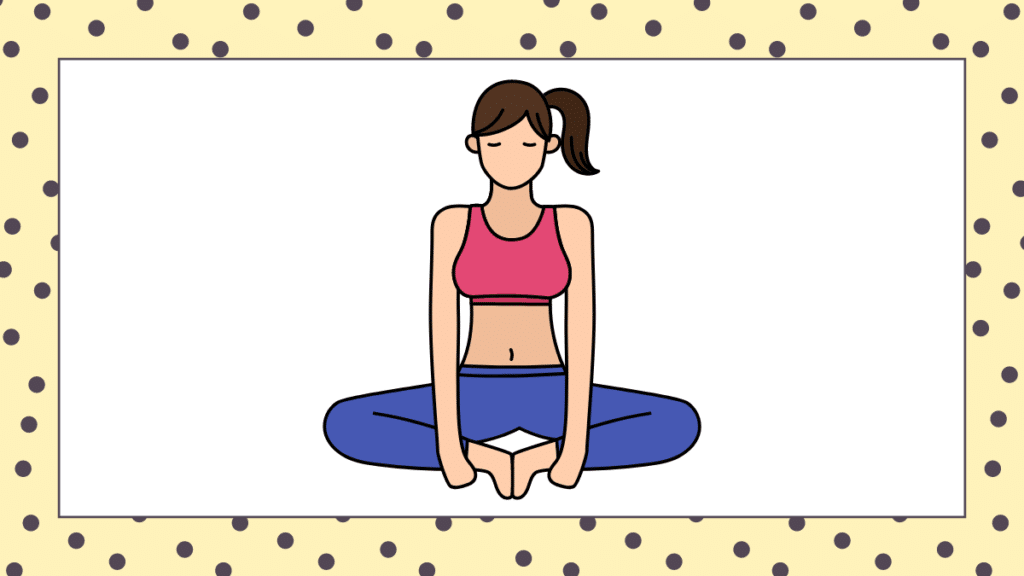
How to Perform:
- Sit on the floor with your legs extended in front of you.
- Bend your knees and bring the soles of your feet together, allowing your knees to drop out to the sides.
- Hold your feet with your hands, and on an exhale, gently fold forward from your hips.
- Stay in this pose for 5-10 breaths, feeling the stretch in your inner thighs and hips.
Benefits: Butterfly Pose opens the hips and stretches the inner thighs, making it an excellent posture for improving flexibility in the lower body. It also helps calm the mind and reduce stress.
Modification:
If your hips are tight, place yoga blocks or folded blankets under your knees for added support.
7. Legs Up the Wall (Viparita Karani)
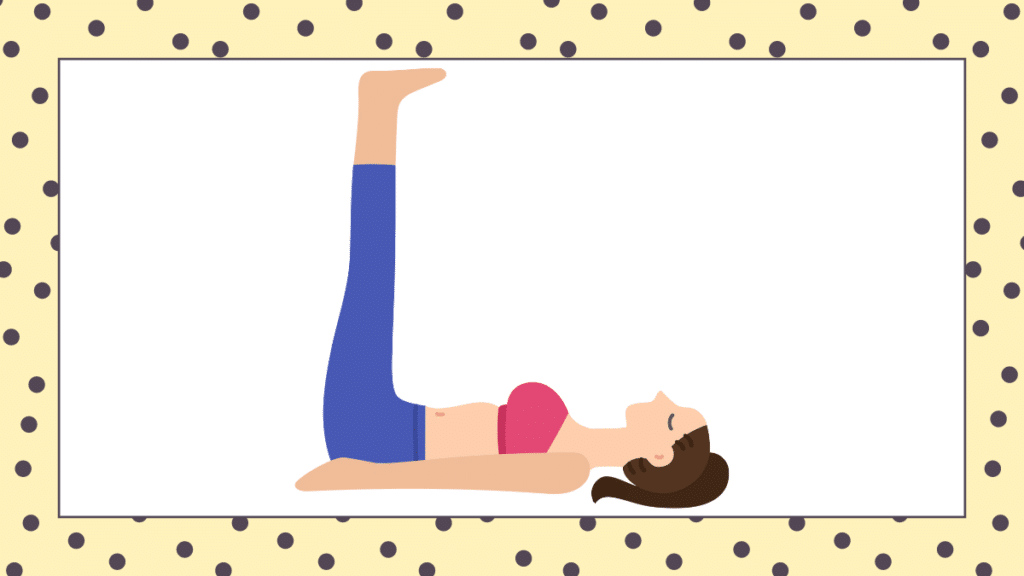
How to Perform:
- Sit with one side of your body against a wall.
- Swing your legs up the wall as you lower your upper body to the floor, forming an L shape with your body.
- Rest your arms by your sides and close your eyes, focusing on deep breathing.
- Hold this pose for 5-10 minutes, allowing your body to fully relax.
Benefits: Legs Up the Wall is a restorative pose that reduces tension in the legs and lower back while promoting relaxation. It’s an excellent pose for stress relief and improving circulation.
Modification:
If you feel uncomfortable in this pose, place a folded blanket under your hips for support.
Breathing Techniques and Mindfulness in Yoga
To maximize the stress-relieving effects of yoga, incorporate deep, mindful breathing into your practice. One common technique is Ujjayi Breath (Victorious Breath), where you inhale deeply through your nose and exhale slowly, slightly constricting the back of your throat to create a soft sound. This type of breathing calms the mind and encourages focus.
Another powerful mindfulness technique is Body Scan Meditation, where you mentally check in with different parts of your body during your yoga practice. This helps you become more aware of areas of tension or discomfort, allowing you to release stress more effectively.
Modifications for Limited Flexibility or Injuries
Yoga is adaptable for all bodies and abilities. If you have limited flexibility or an injury, there are always modifications you can make to each pose. Use yoga blocks, straps, or folded blankets to support your body and reduce strain. It’s also important to listen to your body—if a pose feels uncomfortable or painful, ease out of it and try a gentler variation.
Importance of Consistency in Yoga Practice
Like any other form of exercise, consistency is key when it comes to yoga. While you may see some improvements in flexibility after just a few sessions, long-term practice is what leads to lasting results. Aim to practice yoga at least 2-3 times per week, gradually increasing the intensity and duration of your sessions as you become more comfortable with the poses.
Creating a Calming Environment for Yoga at Home
Your yoga practice is not only about the physical movements but also about creating a calming space where you can fully relax and focus on yourself. Here are some tips for setting up a peaceful environment at home:
- Choose a Quiet Space: Find a spot in your home where you can practice without distractions or interruptions.
- Use Soft Lighting: Dim the lights or use candles to create a soothing atmosphere.
- Play Calming Music: Gentle music or nature sounds can enhance your relaxation and mindfulness.
- Add Aromatherapy: Essential oils like lavender or eucalyptus can promote a sense of calm during your practice.
The Connection Between Yoga and Mental Well-being
Regular yoga practice doesn’t just benefit your body; it also has a profound impact on your mental and emotional well-being. Studies have shown that yoga can reduce symptoms of anxiety and depression, improve mood, and enhance overall mental clarity. The combination of physical movement, deep breathing, and mindfulness helps to reduce stress levels, allowing you to feel more centered and present in your daily life.
Conclusion
Yoga is a transformative practice that offers countless benefits for both the body and mind. By incorporating these seven beginner-friendly poses into your routine, you can boost flexibility, reduce stress, and improve your overall well-being.
Also read: Strength Training for Women: Busting Myths and Creating an Empowering Fitness Routine